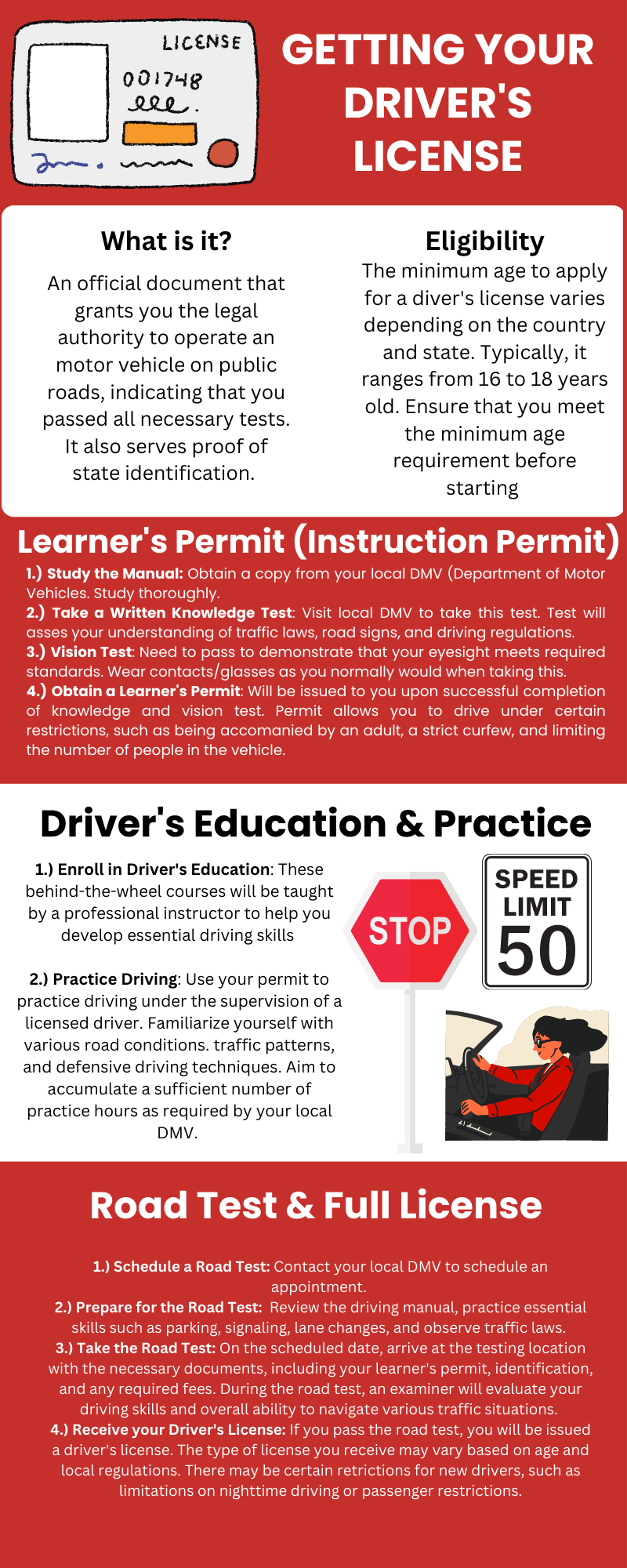Driver’s License: A Guide to Getting Your Driver’s License
A driver's license is an official document that grants you the legal authority to operate a motor vehicle on public roads. It serves as proof that you have passed the required tests and met the necessary criteria to drive safely. Obtaining a driver's license typically involves a process that includes both theoretical knowledge and practical driving skills assessments. Here's an overview of how to get a driver's license:
Eligibility:
Age requirements: The minimum age to apply for a driver's license varies depending on the country and state. Typically, it ranges from 16 to 18 years old. Ensure that you meet the minimum age requirement before starting the process.
Learner's Permit (Instruction Permit):
Study the driver's manual: Obtain a copy of the driver's manual provided by your local Department of Motor Vehicles (DMV) or relevant authority. Study the manual thoroughly to learn the rules of the road, traffic signs, and safe driving practices.
Take a written knowledge test: Visit your local DMV office and take the written knowledge test based on the information in the driver's manual. This test assesses your understanding of traffic laws, road signs, and driving regulations.
Vision test: You will typically need to pass a vision test to demonstrate that your eyesight meets the required standards.
Obtain a learner's permit: Once you pass the knowledge and vision tests, you will be issued a learner's permit. This permit allows you to practice driving under certain restrictions, such as being accompanied by a licensed adult driver.
Driver's Education and Practice:
Enroll in driver's education: Consider enrolling in a driver's education course, which provides structured classroom instruction and behind-the-wheel training to help you develop essential driving skills.
Practice driving: Use your learner's permit to practice driving under the supervision of a licensed adult driver. Familiarize yourself with various road conditions, traffic patterns, and defensive driving techniques. Aim to accumulate a sufficient number of practice hours as required by your local DMV.
Road Test and Full License:
Schedule a road test: Contact your local DMV to schedule a road test appointment. This practical driving test assesses your ability to operate a vehicle safely and follow traffic rules.
Prepare for the road test: Review the driving manual, practice essential skills such as parking, signaling, lane changes, and observe traffic laws.
Take the road test: On the scheduled date, arrive at the testing location with the necessary documents, including your learner's permit, identification, and any required fees. During the road test, an examiner will evaluate your driving skills and overall ability to navigate various traffic situations.
Receive your driver's license: If you pass the road test, you will be issued a driver's license. The type of license you receive may vary based on your age and local regulations. There may be certain restrictions for new drivers, such as limitations on nighttime driving or passenger restrictions.
Renew your driver’s license: There will come a day when your license will expire. Renewing it is quite simple. Check out our article on renewing your driver’s license.
It's important to note that the exact process and requirements for obtaining a driver's license may vary depending on your country, state, or province. It's recommended to visit your local DMV or relevant authority's website to obtain accurate and up-to-date information specific to your location. They will provide you with detailed instructions, necessary forms, and any additional requirements to help you navigate the driver's license application process.


